|
|
|
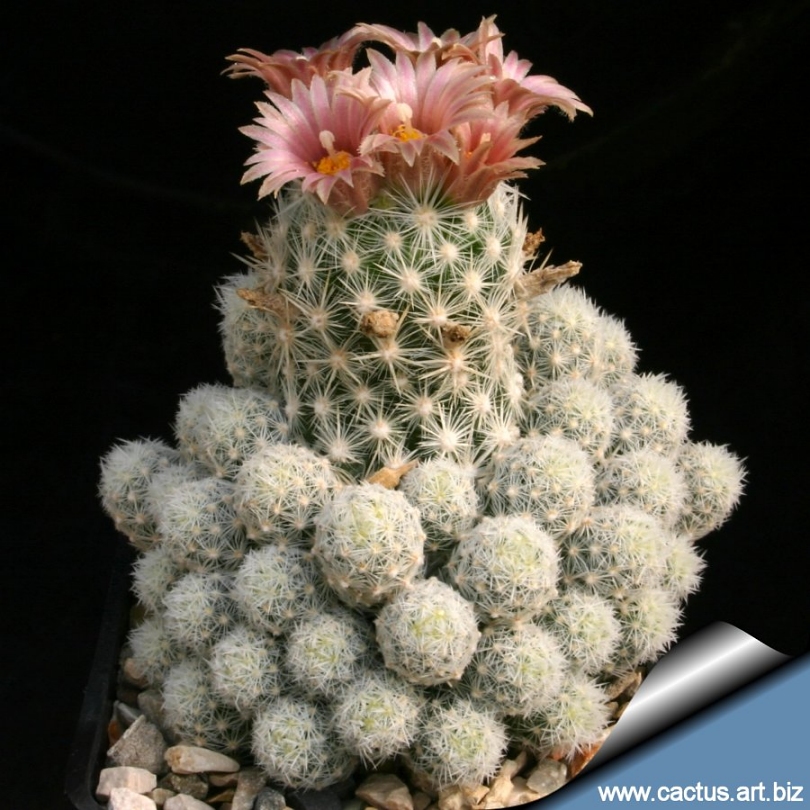
Escobaria sneedii v leei SB397 Eddy Co, NM. USA
|
|
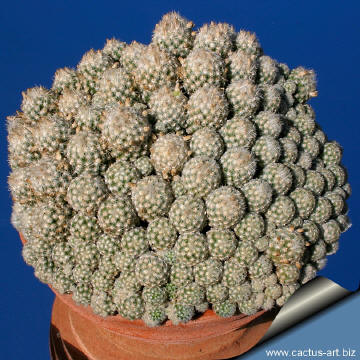
In cultivation the Escobaria sneedii v. leei will form |
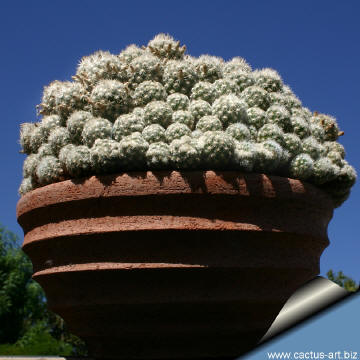
beautiful mounds with hundreds of small heads. |
|
. |
|
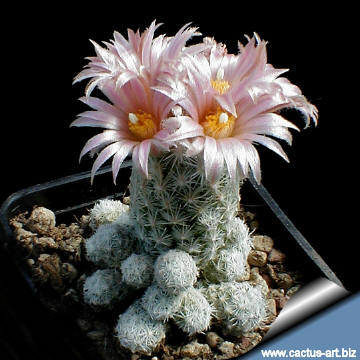 |
 |
|
. |
|
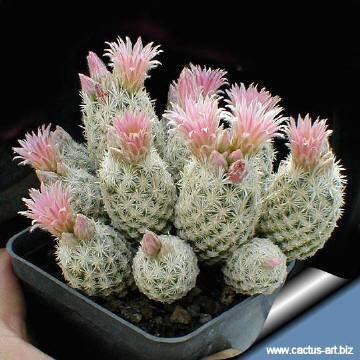
Left:10 a.m. the flowers are going to
open... |
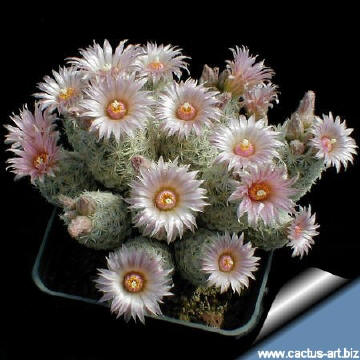
Right: Noon the flowers are completely open. |
|
. |
|
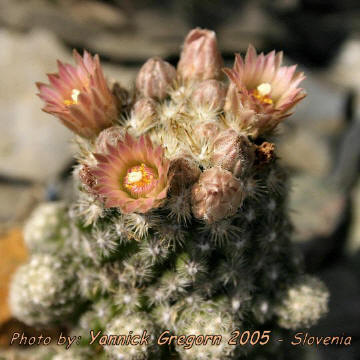
Flowers outdoors in the rock garden!
Winter temps down to -25° C, wet and snow are not
a problem. |

E. sneedii var. leei SB397 Eddy
Co, NM, USA
A plant in the green house |
|
Cultivation:
It comes from an area of
summer
rainfall;
keep
drier in
winter (but for
outdoors cultivation it is very resistant to wet
conditions,
too). Very cold resistant, Itcan easily
be
grown outdoors
in areas with minimum winter temperatures of - 25°. Needs
full sun to light shade.
Propagation:
Seeds (no
dormancy requirement, they
germinate
best at 25°C) or usually by
offsets (readily available),
or
occasionally
grafted.
|
|


Advertising
|
|
|
|
Family:
Cactaceae
(Cactus Family)
Scientific Name:
Escobaria
sneedii
ssp.
leei
(Rose ex Bödecker) D.R.Hunt 1997
Published
in: Cactaceae Consensus Initiatives, 4 : 5, 1997
Common name
(s): Lee's
pincushion cactus
Type:
The type specimen is at the U.S.
National Herbarium (U.S. # 72134).
The
type
locality "Rattlesnake
Canyon 30 miles southwest of Carlsbad at an elevation of 5500 ft W.T.
Lee, 1927"
Basionym:
Mammillaria leei
Distribution:
USA (New Mexico, Eddy County, Guadalupe Mountains)
Conservation status: Listed in
CITES appendix I.
Threatened This species is quite frequent in its very small area of distribution.
It is popular with collectors and has been subject to commercial
collecting in the past, but is now propagated commercially on a
large scale and is readily available and very common.
Habitat: Primarily it occurs on the tops of
limestone ridges in areas of broken terrain, terraces, rim rock
or in poorly developed
limestone soil, the majority of the plants
grow in cracks in the rocks on north-facing slopes between
1,400-1,800 m in
elevation, rarely under cover, usually sparsely distributed
among the
shrubby
vegetation of the high Chihuahuan
desert
(Shrub
and interior
Chaparral ), a plant
community dominated by large almost
arborescent shrubs such as Dasylirion wheelerii and
Yucca torreyi in association with Muhlenbergia, Agave lechuguilla,
Opuntia phaeacantha, Dalea sp. and Berberis trifoliolata.
Etymology: The
genus
name "Escobaria"
recalls the two Mexican naturalists and brothers, Romulo
and Numa Pompilio Escobar, of Mexico City (late 1800s to
mid 1900s)
The
specific epithets
"sneedii" has been
named in honour of "J.R. Sneed" who first collected
this plant in 1921 in the Franklin Mountains of El Paso County,
Texas
The
subspecies
"leei" Has been named after "Willis T. Lee"
(a famous geologist sent on the National Geographic expeditions in the
1920s to assess Carlsbad Cavern for national park status) who first
collected this plant in 1925.
Synonyms:
- Escobaria
leei
Rose ex Bödecker,
Mammill.-Vergl.-Schluss., 17, 1933; cf. Gray Herb.
Card Cat., Issue 145
- Coryphantha
sneedii var. leei (Rose ex Boed.)
L.D.Benson,
Cact. Succ. Journ. (US), 41: 189, 1969
- Escobaria
sneedii var. leei (Rose ex Boed.)
D.R.Hunt,
Cact. Succ. J. (GB), 40(2) : 30, 1978
- Escobaria sneedii
subsp. leei (Rose ex Boed.)
D.R.Hunt,
Cactaceae Consensus Initiatives, 4 : 5, 1997
|
|
Description:
Grows in dense
clusters with as many as 100 or more stems in a clump.
Stem:
Each individual stem is 1.5-6(8)cm tall and 1-2,5 cm in diameter.
Tubercles:
Cylindrical 5 mm long; On
mature
stems with upper surface
grooved.
Spines:
30 to 90 very small
radials,
typically white often brown at tip, fading to grey, slender and
bristle-like, mostly about 1-2.5 mm long, radiating from areole
and appressed against plant, sometimes with one to few short
porrect
centrals.
Roots:
Fibrous.
Flower:
Brownish-pink in early April-May. Showy smaller, usually not
opening widely, 1.2 cm long up to 1.5 cm wide;
tepals
brownish-pink (rarely pale yellowish, or whitish) in colour, usually
with
midstrip darker;
stigmas
white to pink;
Fruit:
Small elongate, 1-1.5 cm long, green to somewhat reddish;
Seeds: About 0.8-1mm long
and 1.5 mm broad, kidney-shaped, pitted, dark brown, with
hilum
lateral.
Notes:
The subspecies leei differs from other Escobaria in
densely its
clumping habit, small stem size, and tightly,
almost
pectinate,
spination. The wild
population intergrades with other forms of E.
sneedii in the Guadalupe Mountains. This is apparently a
neotenic
variety of the species in which
juvenile
spination is retained
throughout the life of the plant. This species is closely related to
E. sneedii var. sneedii from which it differs by having deflexed
spines, rather than spreading ones, brownish - pink flowers as opposed to
rose-magenta ones, and seeds 1 mm long as opposed to 0.75 mm in
length (01,02,05).
|
|
|
|
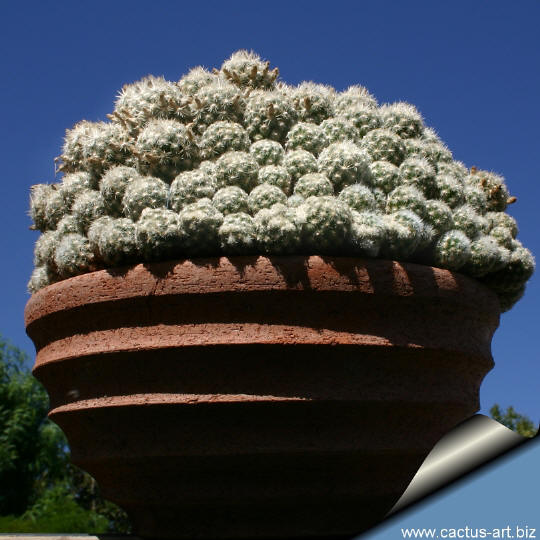
In cultivation the Escobaria sneedii v. leei will form beautiful
large mounds with hundreds of small heads.
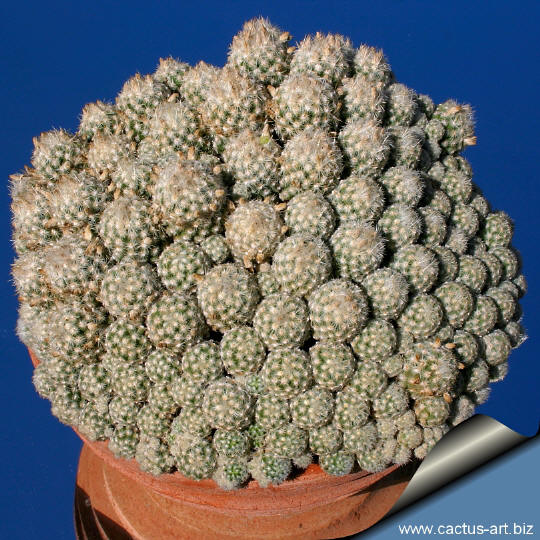
|
|